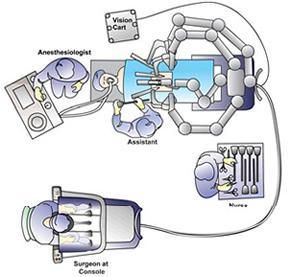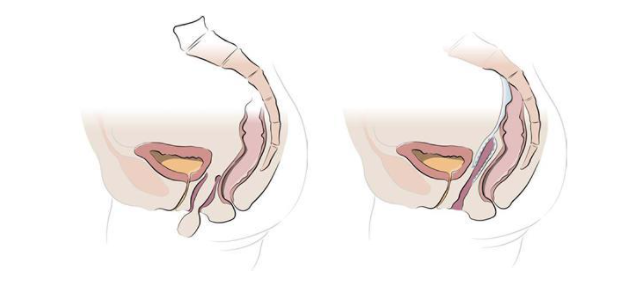When you need urogynecology surgery, you want an expert surgeon who uses the best techniques for your unique needs. You’re in good hands with Dr. Robert Gregory Owens at Advanced Pelvic Surgery in West Chester, Ohio, the premier pelvic floor rehab center in Southern Ohio. Board-certified as both an OB/GYN and female pelvic surgeon, he has over 20 years of experience in urogynecology surgeries including robotic surgeries, an exact, minimally invasive technique using the da Vinci® surgical system. Call or schedule a consultation online today to find out if robotic surgery is right for you.
Robotic Surgery Q & A
What is robotic surgery?
Robotic surgery is a surgical technique where Dr. Owens operates four robotic arms to perform the procedure. Robotic surgeries are minimally invasive, which means they’re performed with specialized instruments including a laparoscope — a slender tube with a light and a camera mounted on the tip — that Dr. Owens inserts through small incisions in your body.
The laparoscope sends images to a monitor in the treatment room, so Dr. Owens can see inside your body without having to make a large incision. He controls the robotic arms, which are more dexterous and have a more extensive range of motion than a human wrist. Click here to see how it works.
What surgical procedures are available with robotic assistance?
Dr. Owens offers several robotic surgeries to address both common and hard to diagnose and treat conditions. The two most common are hysterectomies and prolapse repairs.
The robot consists of a main unit with four arms (a camera and three operating arms) and a surgeon’s console. The robot arms articulate like the human wrist and are controlled by the surgeon at the console. With 3-D optics, the surgeon is virtually inside the patient while the OR crew watches on video monitors in the room. There is a surgical assistant to pass and retrieve items from the surgical field, a scrub nurse to pass instruments, and anesthesia to monitor you during the procedure.
Hysterectomy – A hysterectomy is a procedure that removes your uterus. Dr. Owens may also remove your other reproductive organs including your ovaries, fallopian tubes, and cervix during a hysterectomy, if necessary.
Historically, hysterectomies have been performed in a traditional open surgery that requires a large incision in your abdomen. A robotic surgery only requires a few inch-long incisions in your abdomen.
What surgical procedures are available with robotic assistance?
Prolapse repair – When weakness or damage to your pelvic floor doesn’t provide adequate support to your pelvic organs, organs like your bladder or uterus may relax and descend into your vaginal canal. Dr. Owens repairs prolapses with a robotic sacrocolpopexy, returning your organs to their correct positions and securing them in place with a surgical mesh sling.
Like hysterectomies, sacrocolpopexy used to be performed with traditional open surgery, but advances in medical technology have made minimally invasive robotic surgeries more common.
The figure below shows the vaginal apex (top) falling out of the vaginal opening. The view is from the side like a banana in a banana split. The bladder is in front, the vagina is falling out in the middle and the rectum is in the rear. The backbone is seen on the far right.
Like hysterectomies, sacrocolpopexy used to be performed with traditional open surgery, but advances in medical technology have made minimally invasive robotic surgeries more common.
The figure below shows the vaginal apex (top) falling out of the vaginal opening. The view is from the side like a banana in a banana split. The bladder is in front, the vagina is falling out in the middle and the rectum is in the rear. The backbone is seen in the far right.
What are the benefits of robotic surgery?
Choosing robotically assisted surgery has many benefits over traditional surgical procedures:
- Greater precision than a manual laparoscopic surgery or traditional open surgery
- Reduces risk of infection and other surgical complications because of smaller incisions
- Less blood loss and trauma
- Shorter recovery time
- Easier to heal from a few small incisions than a large incision
Call the caring staff at Advanced Pelvic Surgery in West Chester or schedule a consultation online today to learn more about your surgical options.


